Whatever the SHTF scenario you end up in, you want to make sure of one thing – that you and your family have plenty of food to eat.
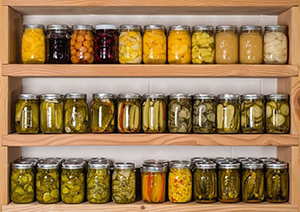 How Much Food Is Enough Food?
How Much Food Is Enough Food?
Ideally, you want to have at least three month’s worth of food stockpiled in your home and/or bug out location. The amount of food needed will be determined by how many people are in your family/group and their nutritional needs (based on age and health condition).
If you’re like most families, you only have about a week or two worth of food in your home at any given time. This is far from where you need to be – remember, we may be just nine meals away from anarchy. This means most households only have enough meals for three days. Once the food runs out, people will start to loot and riot just like in Venezuela. You definitely don’t want to be out in the midst of this inevitable chaos.
So let’s see what you can do to help stockpile food for you and your family members.
Related: 33 Essential Foods to Stock Pile
The best way to determine how much food you and your family requires is to look at how much macro-nutrients and calories everyone needs. Here’s a quick rundown:
• Protein: Babies and toddlers need between 5 and 20 percent, children and teens need between 10 and 30 percent and adults need between 10 and 35 percent
• Carbs: Everyone needs between 45 and 65 percent
• Fat: Babies and toddlers need between 30 and 40 percent, children and teens need between 25 and 35 percent and adults need between 20 and 35 percent
You want to choose your food sources wisely. For instance, olive oil is a great fat source, but also provides other nutrients, like omega 3’s and 6’s, as well as mono-unsaturated fats. You want to avoid saturated fats because their nutritional content is poor and it will only clog up your veins. Avoid the greasy chips and go for canned tuna instead.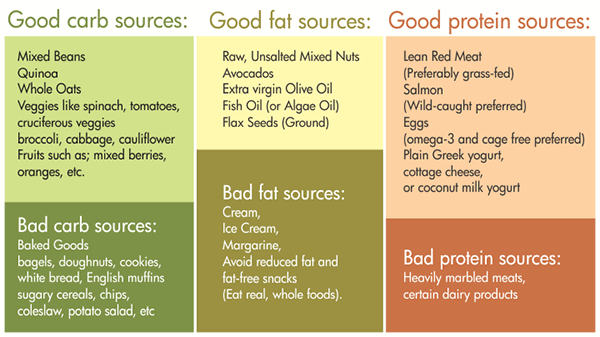 Next, is the calorie count. The amount of calories you need is determined by your age, size and level of activity. The weather can also impact your needs. For instance, if you live in a sweltering hot region, then you’ll end up burning more calories, especially if you are sweating a lot.
Next, is the calorie count. The amount of calories you need is determined by your age, size and level of activity. The weather can also impact your needs. For instance, if you live in a sweltering hot region, then you’ll end up burning more calories, especially if you are sweating a lot.
Typically, sedentary adults should eat at least 1200 calories per day. You need at least 400 calories daily to prevent starvation. It’s possible to prevent malnutrition in this scenario if you consume sufficient amounts of complete multivitamins. So keep this in mind in absolute dire situations.
Generally speaking, you want to aim for between 1500 and 2000 calories daily, but you can fare well with 1200 calories if you keep your nutrition level high enough and your activity levels low. Your best bet is to stockpile foods that are high in nutrients and low in empty calories (like Pemmican). Use your storage space wisely – hoarding bags of cookies and chips is senseless when you can store triple the amount of canned vegetables, lentils and tuna.
Related: What Should You Do With Your Canned Foods After the Expiration Date?
If you’re planning on moving a lot and walking long distances, such as in a bug out situation, then you will want to aim for as much as 3,600 calories daily.
Last, and most importantly, you need to ensure you have at least three month’s worth of multivitamin supplements for everyone in your family.
Calculating for a Family of Four
However, here’s an idea of the calorie and nutrition intake required daily for a mom, dad, a four-year-old and a one-year-old.
 • 140 lb Mom: 2,5000 calories, 65 g protein, 25 g fiber, 5000 IU vitamin A, 60 mg vitamin C, 18 mg iron
• 140 lb Mom: 2,5000 calories, 65 g protein, 25 g fiber, 5000 IU vitamin A, 60 mg vitamin C, 18 mg iron
• 180 lb Dad: 3,000 calories, 75 g protein, 25 g fiber, 5000 IU vitamin A, 6 mg vitamin C, 18 mg iron
• 35 lb 4-year-old: 1,500 calories, 12 g protein, 25 g fiber, 5000 IU vitamin A, 45 mg vitamin C, 10 mg iron
• 25 lb 1-year-old: 1,000 calories, 10 g protein, 19 g fiber, 1000 IU vitamin A, 45 mg vitamin C, 6 mg iron
Planning Your Food Stockpile
For a month’s supply of food based on a 2000 calorie intake, you would need 62,000 calories. This would allow you to eat comfortably for one month. If you need to adjust your intake to save food, you could drop down to 1,200 calories and stretch your month supply to about a month and a half. If you were able to stockpile a year’s worth of food for one adult, then eating 1,200 calories would stretch your food storage from 365 days to 608 days.
It’s possible to buy a year’s worth of food for about $2,000, or you could stockpile smartly and spend as little as $300. This is less than $1 per person per day. If your funds are limited then this is the route you want to take.
Keep in mind that, while it’s important to have a bit of diversity in your food stockpile (to prevent food fatigue and decreased morale), you shouldn’t allow this to negatively affect your stockpile size.
It’s always a good idea to include grains and legumes in your stockpile. These foods are complete proteins, which your body needs to properly function. Without these proteins, your muscles and organs will become weakened. Plus, legumes and grains have a long shelf life, even after exposed to air. Oats and nuts, on the other hand, start to break down once they are exposed to air. They even become stale when kept inside of an airtight container.
Your second thought would be to go after flour. If this is on your prepper grocery list, keep in mind that it contains bugs. The longer you keep flour, the longer these bugs consume and produce excrement, which causes the flour to become sour. It’s best to freeze your flour overnight to kill the insects. You can use a sifter to remove the dead insects, then place the flour into a bag or sealed container. Flour can be kept for years as long as it’s not exposed to moisture.
Related: How to Keep Grains Edible and Fresh for Over 40 Years With Nitrogen
Stockpiling Food for $300
There are different food stockpiling plans circulating the Internet that are worth sharing. If you have a family and are strapped for cash, then these budget friendly plans are the ones you want to incorporate in your prepping strategy. Keep in mind that the pricing may be a little different at the time you read this article since rates do fluctuate over time.
Here’s one list of items you’ll need to stockpile a year’s worth of food for one person for $300:
• Airtight containers. You can find these online or at Home Depot. Once you close the lid, it is sealed and the only way to open it is to tear off the tab. This normally costs under $5.
• Twenty-five lbs of rice (based on your preference and availability). Can be bought from Costco, Sam’s Club or Amazon. You can pay less than $20 for a 50 lb bag of rice.
• Five lbs of legumes (navy, pinto, kidney, chickpea). You can sometimes find one pound for less than a dollar. Also available in 20 lb bags.
• Another grain or flour. You can buy 25 lb of wheat from Sam’s Club, Walmart or Costco. Separate it into 3 lb bags to limit exposure to air. You can add water, salt and a bit of sugar, clump it to a stick and place it in an open flame to make bread or flatten it out to make tortillas.
• A cup of salt in a zip-lock bag (a sprinkle a day goes a long way).
• Two cups of sugar in a zip-lock bag (helps liven food that’s gone stale).
• Hand warmer to use in removing oxygen from your food buckets to help preserve food. Costs about $1 for two.
Here’s another food plan that you can use if you have a family of four. It costs around $300 for three month’s worth of food (bean stew):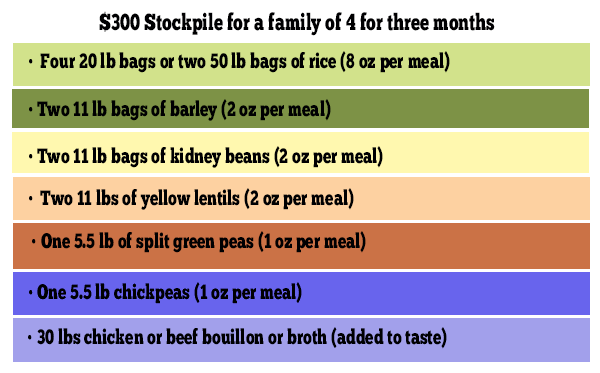 • Four 20 lb bags or two 50 lb bags of rice (8 oz per meal)
• Four 20 lb bags or two 50 lb bags of rice (8 oz per meal)
• Two 11 lb bags of barley (2 oz per meal)
• Two 11 lb bags of kidney beans (2 oz per meal)
• Two 11 lbs of yellow lentils (2 oz per meal)
• One 5.5 lb of split green peas (1 oz per meal)
• One 5.5 lb chickpeas (1 oz per meal)
• 30 lbs chicken or beef bouillon or broth (added to taste)
This should cost around $150 for the food, then the other $150 will be for the supplies, which includes: • Eight 5 gallon buckets (for rice, beans, barley, lentils)
• Eight 5 gallon buckets (for rice, beans, barley, lentils)
• Two 1 gallon buckets (for split green peas and chickpeas)
• Thirty-two oxygen absorbers
Whether you’re planning to bug in or bug out, alone or with a family, make sure you start your food stockpile as soon as possible. Time isn’t on your side!
You may also like:
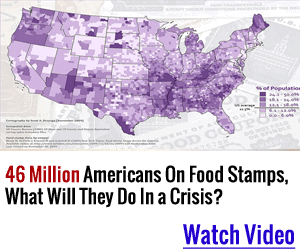 The Only Meds That You Need To Stockpile for SHTF
The Only Meds That You Need To Stockpile for SHTF
Do You Make These Fatal Mistakes In a Crisis? (Video)
The Top 10 Cereal Grains You Need To Have in a Crisis

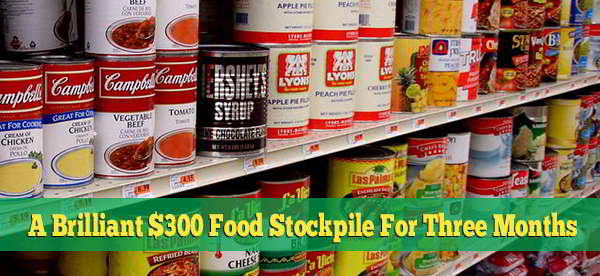













Your opinion about fat is out-of-date. A recent mega-year study has shown that the only fat that increases heart disease is mono unsaturated fat.
BTW, fat doesn’t clog your arteries, and the idea that ingesting cholesterol raises the amount of cholesterol in your arteries is an unproven theory.
Smart man. A lot of preppier sites focus too much n carbs and not enough on fat.
9-year old post, but for those coming across it today:
Fats are required to carry Vitamins A, D, E, & K throughout your system. They are fat-soluable only. Without fat, you are slowly starving your body of neccisary vitamins.
But, in order for vitamins to properly work, your body also requires trace minerals to metabolize the vitamins. The easiest way to obtain these minerals is in a non-processed salt – a salt that doesn’t have them removed. Forget Sea-Salt, Mortons’, etc… , those are pure sodium chloride, & are actually bad for the body. Look for “Real Salt” that contains all the trace minerals & buffers your body needs to metabolize the vitamins.
A good article with reasonable calorie requirements. Be careful when buying “survival’ food kits. Make certain that you examine the caloric content. While I have not reviewed every manufacturer in the marketplace, the ones I have reviewed have very small caloric content. They all talk about how many servings they contain but the calories in a “serving” that I have examined has always been less than 400 calories. Twelve hundred calories a day is what I understand the Nazis fed their concentration camp prisoners. We’ve all see what happens on 1200 calories a day. Many of their “servings” are less than 300 calories per “serving”. Keep in mind in the kind of situation where you need emergency food, you are going to be burning many calories a day just meeting your basic living needs. 800 to 1200 calories a day is going to leave you fatigued and not able to function after a short while.
I was quite dismayed to realize that my “3 months” supply of long term storage food which cost quite a bit of money would actually last me less than half that period of time. I now buy canned goods at far less money and it is all food that I have eaten before and know that it is palatable.
Very poorly written article with dangerous advise. Information on fat is outdated and error ridden. 400 calories a day is nowhere near enough to prevent starvation. Where in the world did that number come from? The food storage advice is pathetic. Suggest looking elsewhere for useful advise.
There is much evidence that eating much
fewer calories than what our Western idea demands actually extends life.
Plus, we can add to that in the moment with Spruce or Pine needle tea (very nutritious), or powdered dried bugs thrown in soup, or other naturally occurring foods. Add a 1000 tea bags to the supply. Add what you think you need. This is a good start.
I think a lot of this has to do with *where* you will be staying for a year.
If you’re in a cabin in the woods, there are lots of options to supplement your diet.
If you’re living in an underground bunker, you basically only have what you brought with you.
BTW he doesn’t say 400 calories per person. He lists 2000 calories per day and though he doesn’t say it he means per person not per 4 person household. Read the charts and the rest of the article.
Not even close. The first one, “A year’s worth of food for 1 person for $300” provides only 244 calories per day.
25 lbs rice= 1646 cal *25 = 41,150
5 lbs pintos= 1588 cal *5 = 7940
25 lbs durum wheat= 1538 cal * 25 = 38450
2 c sugar = 773 cal *2 = 1546
89,086 calories for a year, divided by 365 days in a year. 244 calories per day.
Does anyone really think that a person can live for an entire year on 50 lbs of grain, 5 lbs of beans, and 2 cups of sugar?
Break that down to a month. 4 lbs of grain (flour), 2/3 cup of dried beans, and 3 Tbsp sugar and a 1.5 Tbsp salt.
The second one is just as dangerous.
Christofo, actually the author does say 400 calories per person to prevent starvation. It’s even bolded. “Typically, sedentary adults should eat at least 1200 calories per day. You need at least 400 calories daily to prevent starvation.”
I take that back. The second is better. It provides 746 calories per day per person, not including the broth. Still not enough, but at least better than 244 calories per da
Thanks!
Great article, but one tiny correction. Nobody needs carbs. People like carbs but they don’t need them. You need fats and protein. I have been on a zero carb diet for over a year. I’m in better shape than I was 20 years ago!
I just heard on a survival show on TV that a person can get Protein Poisoning by eliminating ALL carbs from ones diet. A COMPLEX carb (not processed foods but whole live foods in the form of fruits, vegys, whole grains, etc) can be added in small amounts to give the balance. A full Protein only diet can overload the kidneys and cause devastating effects. Sorry, not enough space to go into the science, and I fully don’t know all the physiological processes but just a thought so others can keep it in mind for further research as I will be doing soon. Thanks for listening and reading. There is so much to learn huh folks?
Bullshit. Thank hav been eating keto for 6 years, basically no carbs, healthier now than have ever been.
OK, now that you have all this rice, legumes and so forth, what do you make with it? I’m no cook and rice and beans doesn’t sound very appetizing.
Few days ago, i was thinking how much food i need everyday to live a healthy life? Although, in this article cover most of the part. But my opinion about it that we must need at least 2000 calories and burn daily at least 300-400 calories by walking or excise. I always keep it simple.
When come a question about how much “How Much Food Is Enough Food”? It’s really confusing. I have seen some people who eat lots of calories but still they are not fact. But, like me i eat do not eat lots but try to eat less junk food. But sorry to say, still i am going to fat.
i think Hard work or daily exercise only matter to keep you slim and strong.
I hate to be that guy but, the info is not great here. 1st off the buckets at home depot are NOT food grade and the hand warmers for oxygen absorbers is a horrible idea as they are also not food grade. If you want to use home depot buckets (which I use some) you need mylar bags. Also PLEASE use proper oxygen absorbers. Why waist all the money you spend on food if you are not going to store it properly.
Vacuum Seal your food. last longer. Doesn’t take up much space.
Think outside the box…the ‘narrative’ !!